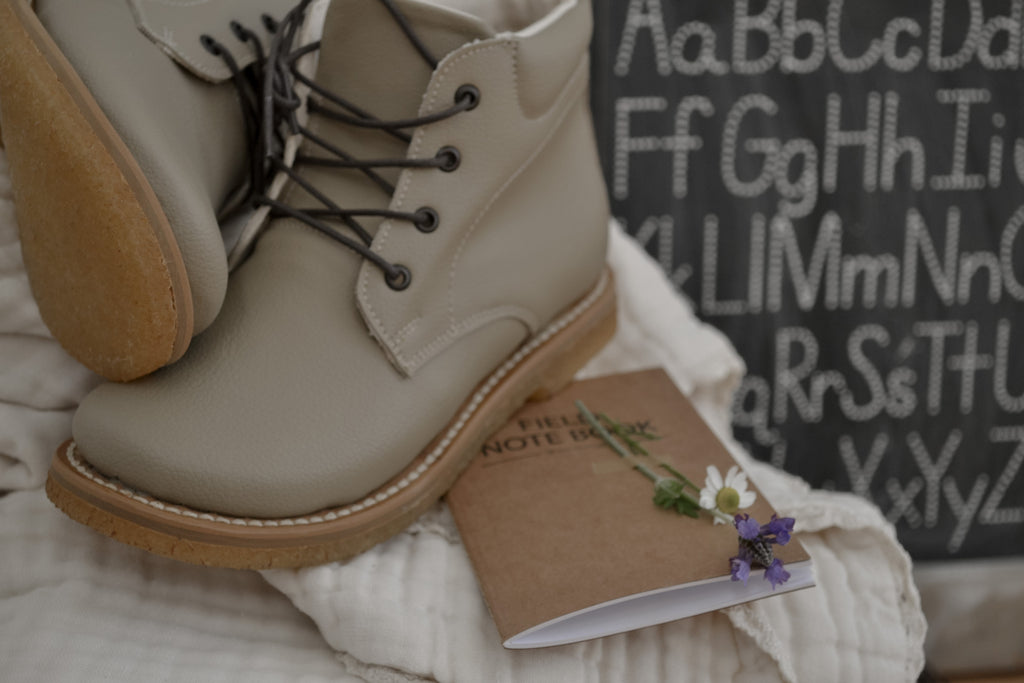Handcrafting vs. Mass Production: The Unbeatable Quality of Artisan Children’s Shoes

In a world where mass production dominates the market, churning out thousands of replicas in record time, the age-old art of handcrafting often takes a backseat. Yet, when it comes to children's footwear, the difference between the two is not just palpable but paramount. The painstaking process of handcrafting yields results that mass-produced shoes simply can't match. Let's delve deeper into why artisan children's shoes stand head and shoulders above their assembly line counterparts.
1. Superior Durability Handcrafted shoes benefit from the expertise and discernment of seasoned craftsmen. Each stitch, seam, and sole is meticulously placed and checked. There's a deliberate fusion of material, ensuring that the shoe isn't just aesthetically pleasing but also long-lasting. In contrast, mass-produced shoes are often assembled rapidly, increasing the chance of overlooked flaws and compromised durability. For playful, active children, the robustness of handcrafted shoes means fewer replacements and better protection for their feet.

2. Attention to Detail Mass production is primarily about speed and volume, which often leads to a one-size-fits-all approach. Handcrafting, however, celebrates the nuances. Artisans take their time, ensuring every detail, whether it's a tiny embellishment, a delicate lace pattern, or the curve of the shoe's arch, is perfectly rendered. This meticulous attention ensures not just a better fit but also a product where every element serves a purpose, be it comfort, style, or support.

3. Uniqueness in Design In an era where individuality is celebrated, artisan shoes allow children to stand out. Each handcrafted pair, even within the same design, carries subtle distinctions—a testament to the human touch involved in its creation. Instead of wearing identical shoes to thousands of other kids, your child gets a pair that's uniquely theirs. This exclusivity is something mass production can never truly achieve.

4. Ethical and Sustainable Handcrafted shoes often have a smaller carbon footprint compared to those mass-produced. Artisans typically source local materials, reducing transportation emissions. Moreover, handcrafting is energy-efficient, relying more on skills and less on machinery. The result? A shoe that not only looks good and feels good but also does good for the planet.

5. True Value for Money While handcrafted children's shoes might sometimes come with a heftier price tag, their longevity offers genuine value for money. Instead of buying multiple pairs due to wear and tear, parents will find that artisan shoes last longer, enduring the adventures of childhood with grace. Over time, the investment pays off, both economically and in the quality it provides to the child.

6. A Celebration of Craftsmanship Choosing handcrafted shoes is also a nod to tradition, skills, and artistry. It's a way of honoring craftsmen and ensuring their invaluable techniques, honed over decades, are not lost to mechanization. Every purchase supports not just an industry but an art form.

In conclusion, while mass production has its advantages, when it comes to children's footwear, the handcrafted route emerges as the clear winner. Artisan children's shoes, with their durability, attention to detail, and unique designs, offer an unbeatable quality that assembly lines can't replicate. They encapsulate the essence of true craftsmanship—each pair tells a story, a narrative of dedication, passion, and unparalleled skill. In the debate between handcrafting and mass production, artisan shoes tread a path of distinction, proving that sometimes, the old ways are not just golden but unparalleled.
